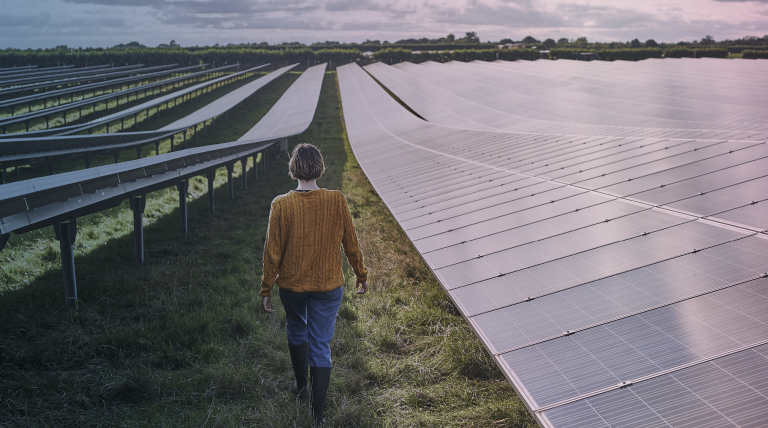For 40 years, we've been driving our country's economic and social progress. Four decades shaping Spain.
Demand for electricity in Spain increased by 2.9% in July
37.6% of the country's electricity production in July was renewable and 57.2% was obtained using zero-carbon energy technologies.
Solar technology (photovoltaic and thermal) produced a total of 4,037 GWh of electricity in July, the highest contribution from solar power since records began.
National electricity demand in July is estimated at 23,552 GWh, 2.9% higher than that recorded in the same month in 2021. According to provisional data, after having factored in the influence of seasonal and working patterns, national demand registered an increase of 0.3%.
In the first seven months of 2022, demand is estimated at 148,953 GWh, 0.6% lower than in the same period in 2021. Once again, according to provisional data, after having factored in the influence of seasonal and working patterns, demand is 1.7% lower than in the previous year.
In the month of July, and according to data estimated at the time of this press release, generation from renewable energy sources accounted for 37.6% of production nationwide and 57.2% of electricity generation was obtained using zero-carbon energy technologies.
Wind power generation in July stood at 4,328 GWh and represented 16.4% of the total. Wind power production in July this year recorded an increase of 1.1% compared with the same month in 2021, while solar photovoltaic, with 3,346 GWh recorded this month, increased its production by 27.9% compared to last year, reaching a share of 12.7% of the total generation mix.
Thanks to the increase in photovoltaic, the set of solar technologies in Spain (photovoltaic and solar thermal) produced 4,037 GWh in July, the highest amount of electricity ever recorded in a single month.
Demand for electrical energy in the peninsular electricity system grew by 2.2%
Demand for electrical energy in the mainland electricity system in July is estimated at 22,038 GWh, a value that is 2.2% higher than that registered in July 2021. After having factored in the influence of seasonal and working patterns, demand has decreased by 0.5%.
In the first seven months of 2022, electricity demand on the Spanish mainland is estimated at 140,322 GWh, 1.2% less than in the same period in 2021. Once again, after having factored in the influence of seasonal and working patterns, the figure is 2.3% lower than that recorded in the same period last year.
During July, and according to data estimated at the time of this press release, 38.7% of electricity generation on the mainland came from renewable sources and 59.4% was obtained using zero-carbon energy technologies. Wind power accounted for 4,142 GWh and contributed 16.6% to the mainland generation mix, while solar photovoltaic, with 13.1% of the mix, increased its production by 27.7%, compared to last year, closing the month with a contribution of 3,277 GWh.
Demand for electricity in July increased by 18.1% in the Balearic Islands and by 9.9% in the Canary Islands
Electricity demand in the Balearic Islands in July is estimated at 709,839 MWh, a value that is 18.1% higher than that recorded in the same month last year. According to provisional data, after having factored in the influence of seasonal and working patterns, the figure is up 19.4% on that recorded in July 2021. In the first seven months of 2022, gross demand on the Balearic Islands is estimated at 3,495,215 MWh, a value that represents an increase of 14.1% compared to the same period in 2021.
In terms of overall generation, combined cycle, with a share of 63.3% of the total energy produced in the Balearic Islands, was the leading technology in the archipelago in July. In any event, it should be noted that renewable energy generated in the Balearic Islands, using zero-carbon energy technologies, accounted for 7.8% of the total on the archipelago. Additionally, during this month the submarine link between the mainland and Majorca contributed to covering 9.3% of the electricity demand in the Balearic Islands.
Regarding the Canary Islands, electricity demand is estimated at 767,731 MWh, up 9.9% on that recorded in July 2021. After having factored in the influence of seasonal and working patterns, demand increased by 8.3% compared to the previous year. In the first seven months of 2022, demand on the Canary Islands, in gross terms, is estimated at 4,907,128 MWh, 10.2% higher than in the same period in 2021.
With regard to electricity generation in the Canary Islands, combined cycle, with 39.9% of the total generation, was also the leading technology in July, while renewables and zero-carbon energy technologies accounted for 29.3% of production, with wind power representing 24.2% of the total mix on the islands.
Consult our Daily Balance Report for more information on the National, Peninsular, Balearic Islands and Canary Islands electricity systems as at the close of July.












